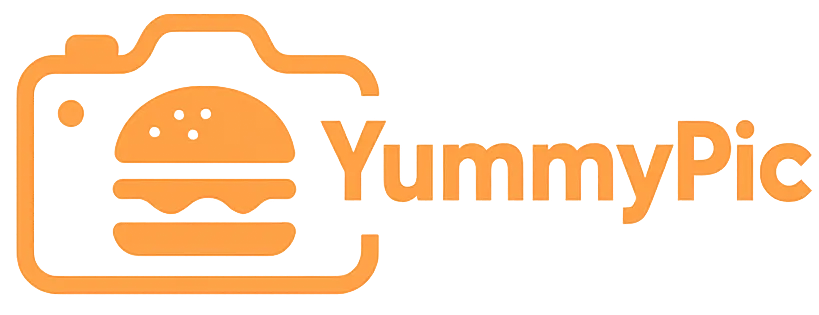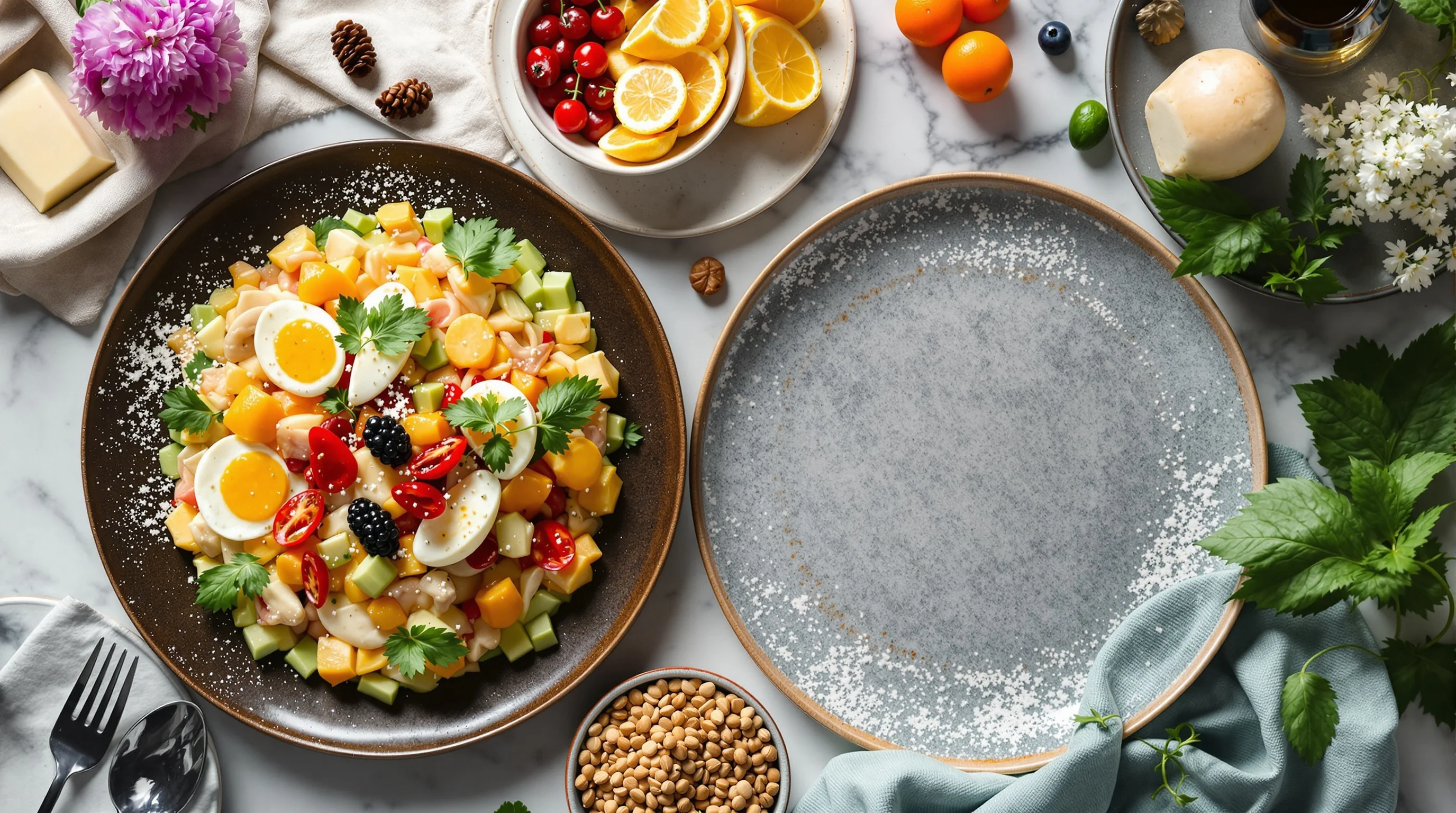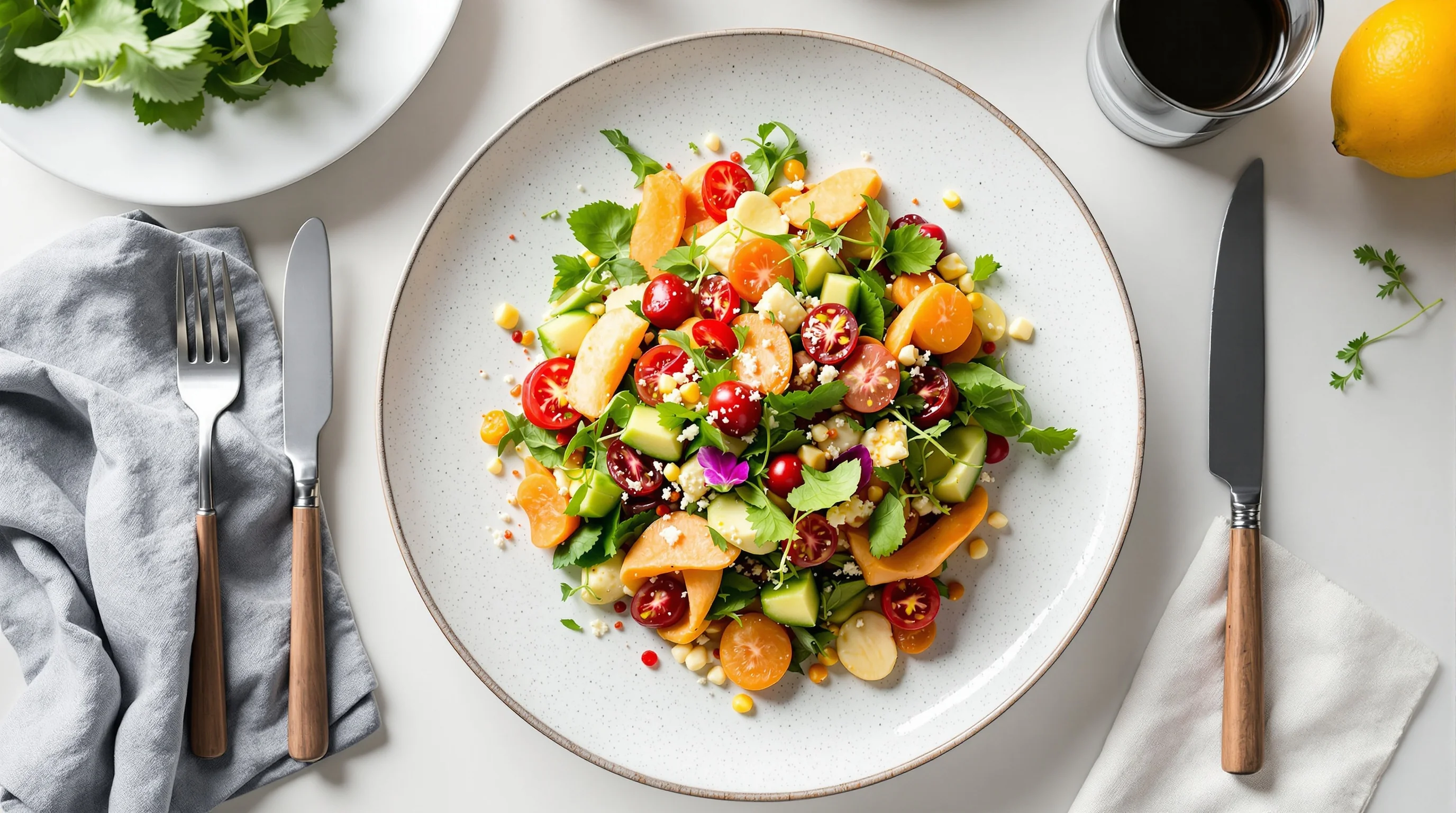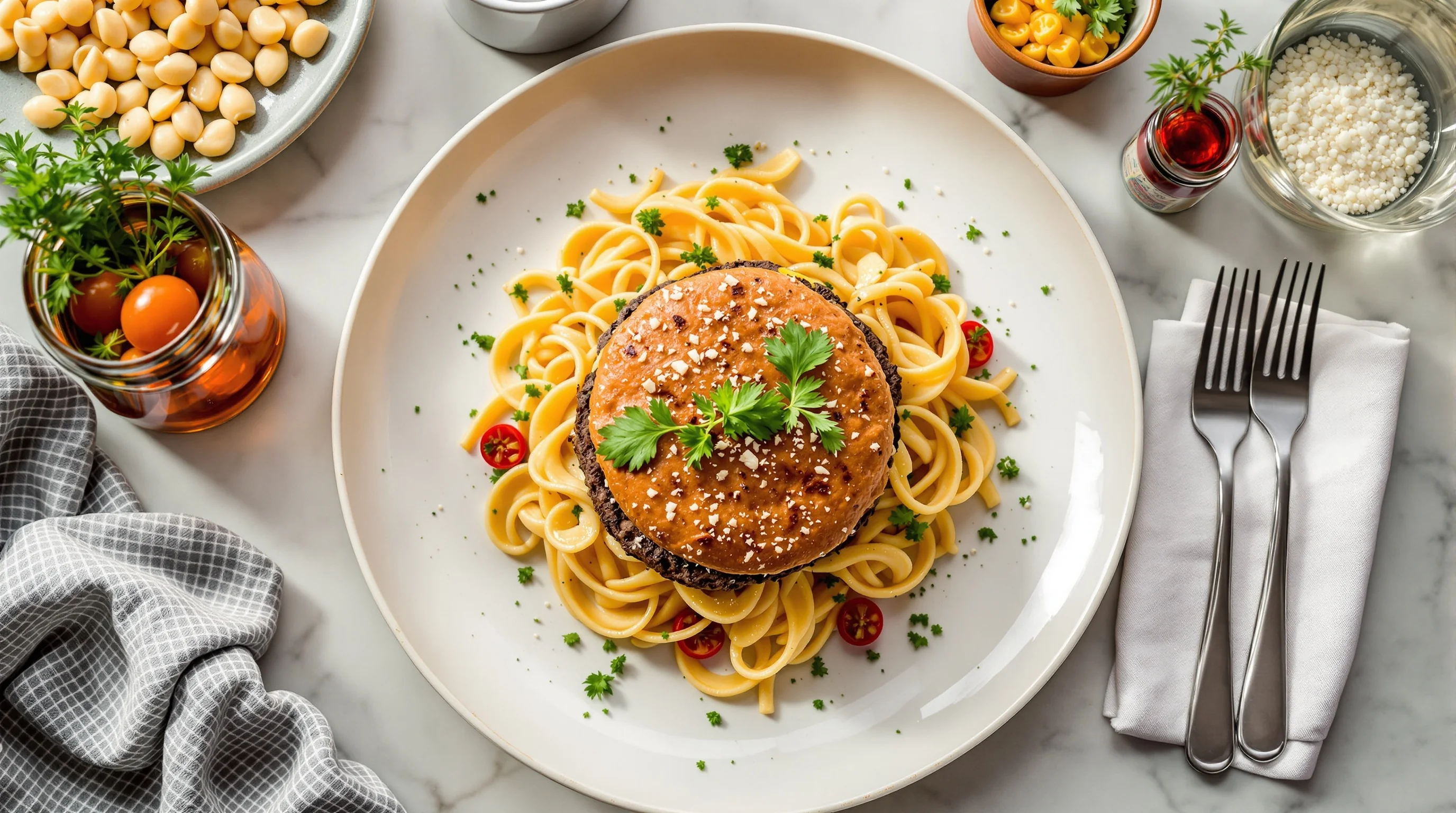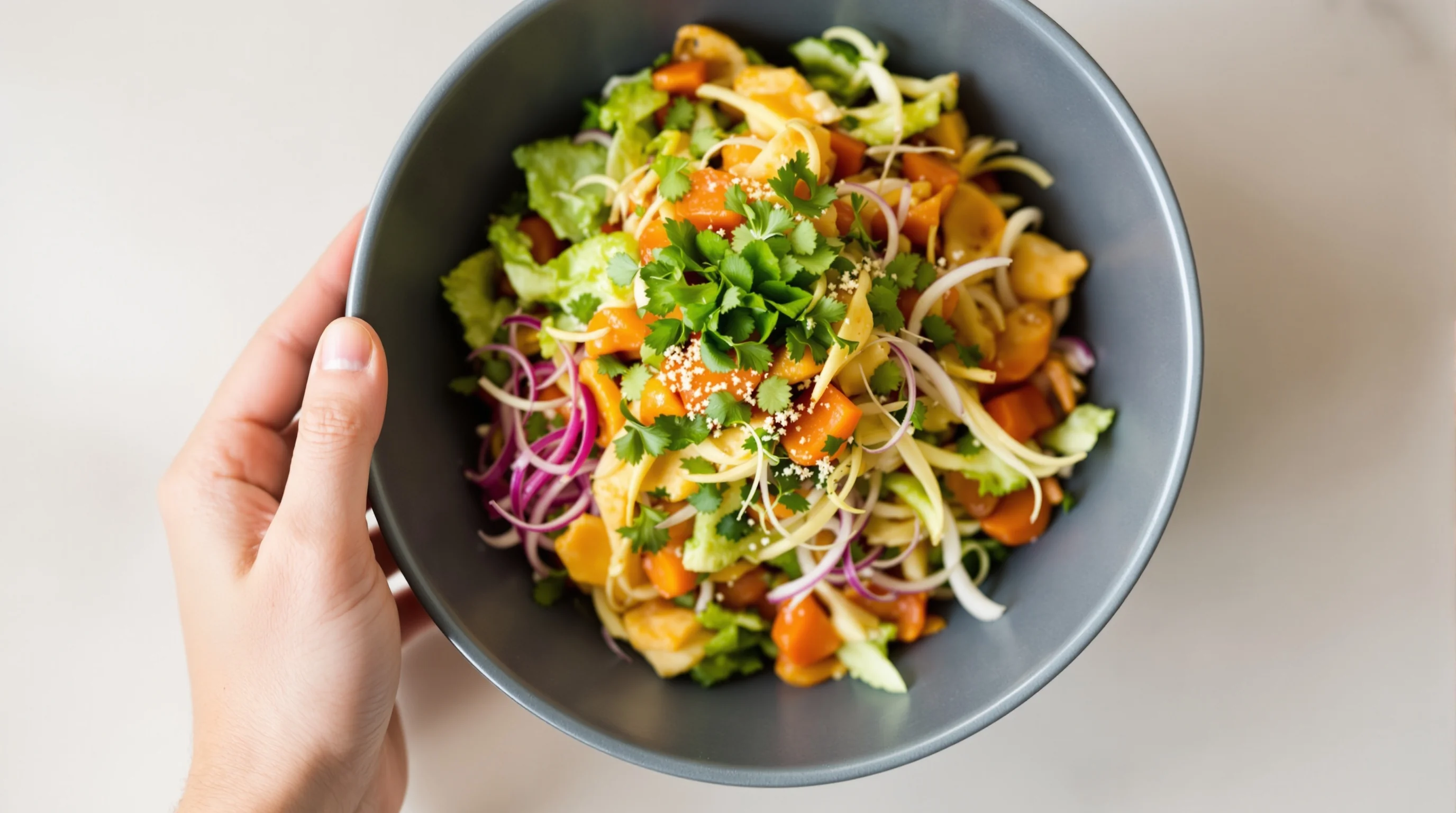Introduction: The food photography composition rule of thirds is one of the simplest, most effective tools you can use to make menu and social photos look professional. Whether Sie shoot with a DSLR or a smartphone, placing the main dish along a 3×3 grid line or at an intersection instantly balances the image and guides the viewer’s eye. In this guide Sie will learn not only the rule’s basics but practical, step-by-step methods for flat-lays, angled shots, and quick fixes when time is tight.
What is the rule of thirds and why it works
The rule divides a frame into a 3×3 grid; intersections are natural focal points. Placing a plate, garnish, or cup on one of those intersections helps create balance and keeps food photography composition rule of thirds from appearing static or boring. Many cameras and smartphones offer a 3×3 overlay to make this automatic — turn the grid on and let it guide your framing (camera menu > grid settings).
Key facts: The rule-of-thirds intersections are ideal focal points; placing your main subject on a grid line or intersection creates balanced, eye-catching compositions (FoodPhotographyAcademy.co). Using a grid also helps develop a visual rhythm when shooting multiple dishes for a menu. This simple math improves both flat-lay plating photography tips and angled, narrative food shots.
- 3×3 grid: four intersections to consider
- Place the strongest element on an intersection
- Use grid lines to divide space (one-third of frame occupied by subject)
How to apply the grid to flat-lays and angled shots
Flat-lays benefit from symmetry and patterns, but the food photography composition rule of thirds keeps them dynamic. Shift the plate so a key element (a glazed slice, a garnish, or a cut edge) sits on an upper intersection; place props or negative space in the opposite third to balance. For angled shots, use a diagonal line that follows a grid line — a fork, sauce swirl, or slice edge — to lead the eye toward the intersection.
Practical setup: Turn on the camera grid, position the main subject at an intersection, and add props to the other intersections. For plating photography tips, think in thirds for plate placement, garnish grouping, and background spacing. This keeps images feeling composed and intentional rather than centered and static.
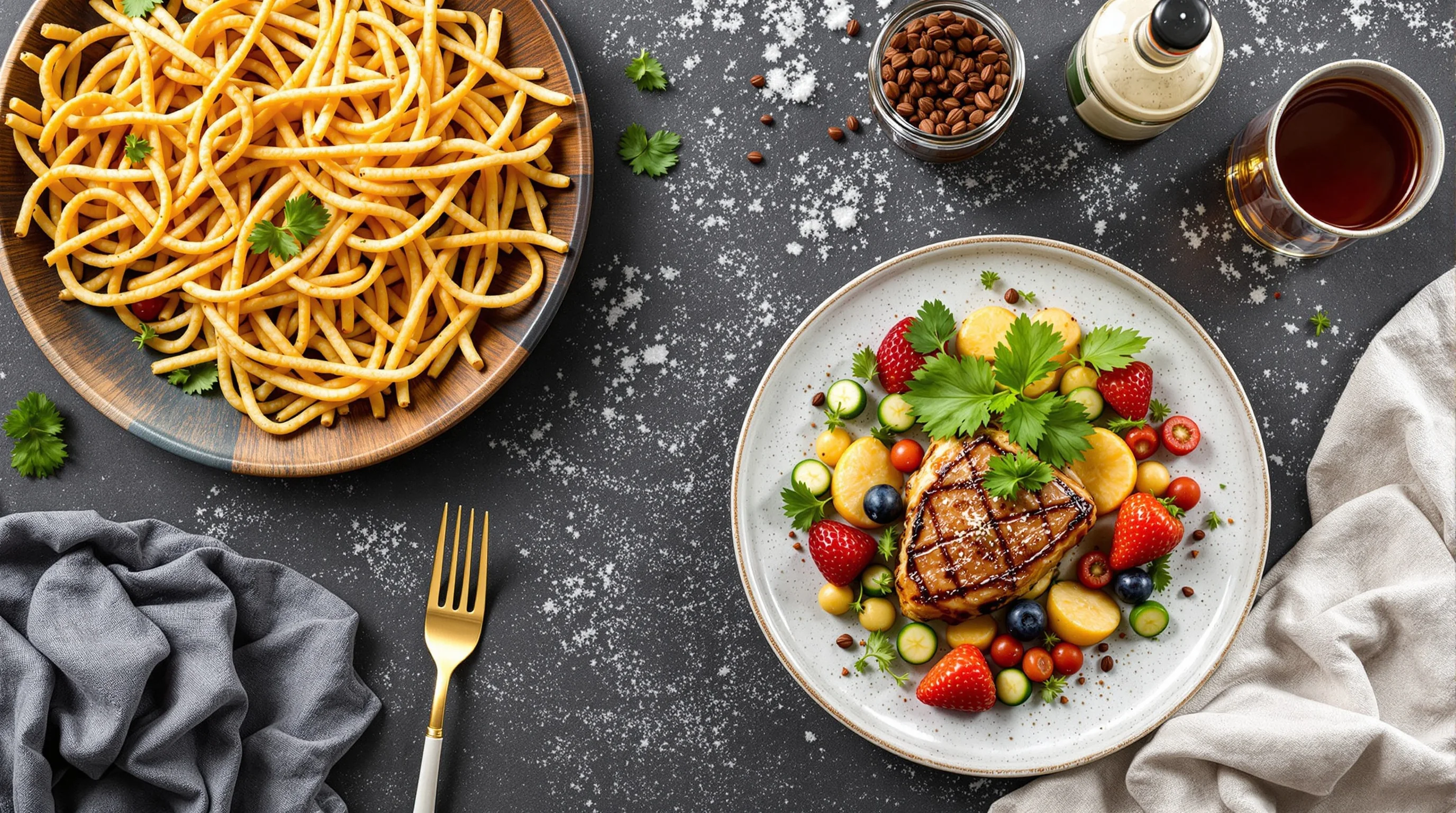
Step-by-step composition planning (a sketch method)
Start with a quick sketch on your phone or paper before shooting. Draw a 3×3 grid, mark the intersection where you want the main bite or focal point, then map props, negative space, and light direction. This simple composition planning fills a content gap many competitors miss: a concrete, repeatable sketch routine that saves time on set and delivers consistent results.
Step-by-step: 1) Draw grid 2) Mark main subject at intersection 3) Place props on secondary intersections 4) Check negative space and leading lines 5) Shoot and fine-tune. Using this ordered approach, Sie train your eye to compose quickly and accurately, whether preparing photos for Instagram or DoorDash.
- Draw a 3×3 grid sketch
- Choose the strongest visual element and mark a focal intersection
- Arrange supporting props or utensils on secondary points
- Leave one-third of the frame intentionally empty for negative space
- Take a test shot, adjust, and finalize
Using smartphone tools and camera grids effectively
Modern smartphones include a grid overlay — enable it to follow the food photography composition rule of thirds automatically. Many camera apps also offer manual exposure, focus locking, and level guides; use focus lock on the food at the intersection and tap to set exposure so the dish retains color and texture. This addresses a common pain point: restaurateurs and bloggers who rely on phone photos need simple, reliable tools.
If Sie shoot with a phone, try these quick hacks: use a portable reflector (white card) to fill shadows on the away side, set the grid to 3×3, and shoot multiple aspect ratios (square for Instagram, portrait for stories). These small steps make the food photography composition rule of thirds work for real-world restaurant use.
Composition beyond the grid: negative space, leading lines, and balance
The rule of thirds pairs naturally with negative space composition and leading lines food photography techniques. Use an empty third to give the eye room to rest; that negative space can contain text for menus or promotions. Leading lines — a chopstick, a pour, or a knife edge — can guide the viewer to the intersection, reinforcing the rule without rigid centering.
Balance is crucial: if the dish sits on the left intersection, place a small prop or garnish on the right to avoid lopsided composition. These practical composition adjustments make images feel curated and professional, which is especially important for menu designers and delivery platform images.
Real impact: statistics and why this matters for sales
Using professional food photos can directly affect restaurant sales. Restaurants using professional food photos can see up to a 30% sales boost (KitXens). Menu items with quality photos receive about 6% more orders, and switching to photo-rich menus can raise conversion by ~25% (KitXens). One source claims rule-of-thirds composition images get ~25% more engagement (likes) than centered shots (RecipeKit). These numbers show small composition changes often lead to measurable business results.
"The rule of thirds helps create balance and draws the viewer’s eye to key points in a photo, making it more appealing."
Darina Kopcok (RecipeKit)
These statistics help close the content gap around quantifying composition impact. If Sie manage a cafe or food truck, investing a few minutes in composition yields higher engagement and can translate to orders on DoorDash, Grubhub, and other platforms.
When to break the rule of thirds
Knowing when to break the food photography composition rule of thirds is as important as knowing how to use it. Centering can work when symmetry, a strong geometric plate, or a dramatic overhead hero shot is the point. Breaking the rule intentionally can create tension or highlight a minimalist aesthetic—use it when the centered composition tells the story better.
Expert perspective: "Great composition transforms ordinary food photography into masterful storytelling." – Launie Kettler. Use centered framing for strong symmetry, but return to the rule of thirds to create movement when the image feels static or predictable.
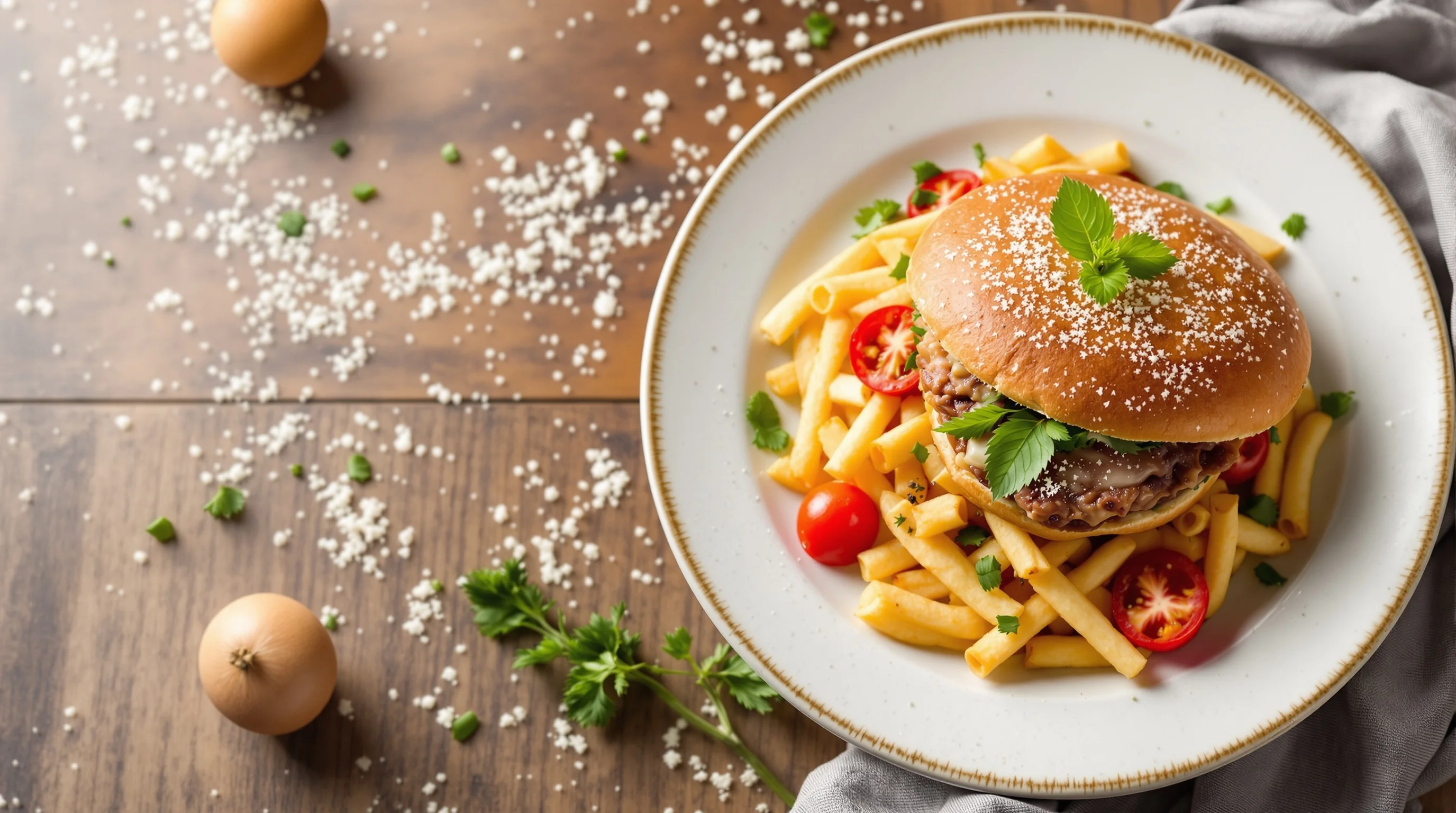
Practical examples: 6 framing ideas using the rule
Here are concrete composition plans Sie can use at service: 1) Place a cut sandwich at a top-left intersection with crumbs leading to the bottom-right; 2) For soups, set the bowl on a lower intersection and add garnish on the opposite; 3) For desserts, position a slice to show texture at an intersection; 4) For drinks, put the glass on a vertical grid line with negative space for text; 5) For sharing boards, use a diagonal leading line; 6) For close-ups, use an intersection to highlight the bite.
- Cut sandwich at top-left intersection with crumbs
- Soup bowl on lower intersection with garnish opposite
- Dessert slice showing interior at an intersection
- Drink on a vertical grid line with empty space for copy
- Sharing board along a diagonal leading line
- Close-up texture on intersection for detail shots
These steps fill a practical gap by giving restaurant teams repeatable shot concepts that use the food photography composition rule of thirds to produce menu-ready images quickly and consistently.
Fast fixes and editing tools — including AI
If Sie have limited time or budget, use AI-powered tools to apply composition rules automatically. YummyPic, for example, transforms basic phone shots into pro-quality images in seconds and applies smart cropping and composition rules similar to the food photography composition rule of thirds. This addresses the pain point of restaurateurs who lack time or budget for full shoots.
YummyPic benefits include speed, cost-effectiveness, multiple style presets, and instant high-resolution downloads optimized for platforms like DoorDash and Grubhub. AI-enhanced food images reportedly increase orders by ~30% in some cases (YummyPic). These tools let Sie create menu and delivery photos quickly without props, lights, or long editing sessions.
- AI-powered automatic cropping to rule-of-thirds compositions
- Style presets (bright & airy, dark & moody)
- Fast, high-res downloads for delivery platforms
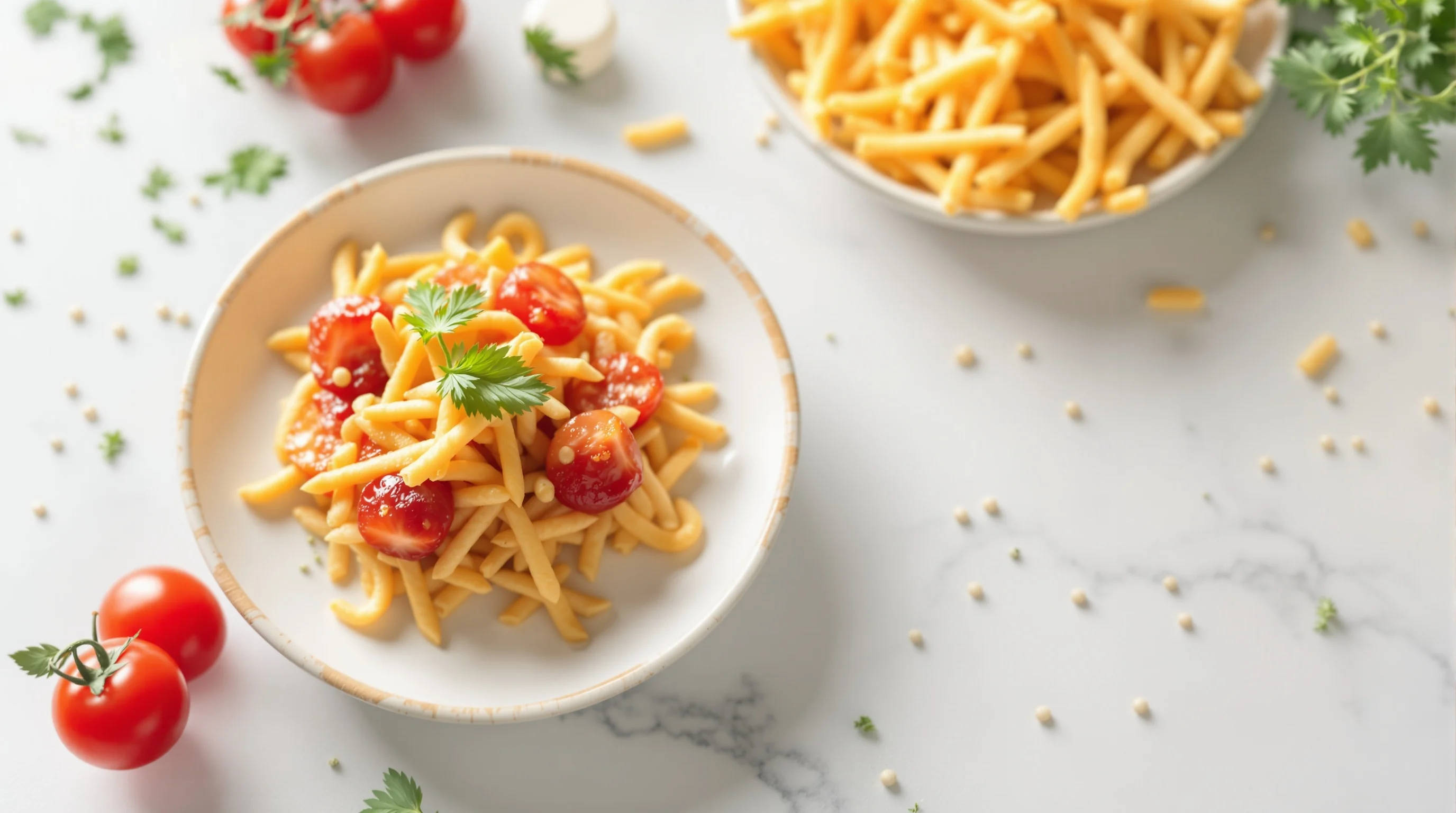
Common mistakes and how to avoid them
Common errors include centering by default, overcrowding the frame, and ignoring negative space. The simplest fix is to enable the grid, mark an intersection for your strongest element, and remove anything that competes. If a dish looks lopsided, move it one grid step; if a garnish steals focus, simplify or blur the background slightly to maintain emphasis on the intersection.
Another mistake is inconsistent crop across platforms. For example, Instagram square crops can cut off elements placed on the edge; shoot wider and plan crops using the grid so you can adapt to square, portrait, and delivery platform aspect ratios without losing the focal intersection.
💡 Pro Tip
💡 Pro Tip
Use a quick smartphone sketch to map the 3×3 grid and mark where you’ll add text for menus. If time is limited, upload a single phone photo to YummyPic to create multiple stylistic crops that follow the rule automatically — fast, cost-effective, and optimized for DoorDash and Grubhub.
Putting it all together for restaurant workflows
For restaurants, the ideal workflow is: 1) Quick sketch, 2) Enable grid, 3) Place dish at an intersection, 4) Shoot multiple aspect ratios, 5) Use AI or manual edits to finalize. This pipeline uses the food photography composition rule of thirds to produce consistent images that can increase engagement and sales, addressing restaurateurs’ biggest pain points.
When Sie integrate this approach into daily service — even taking one or two phone photos per dish — the cumulative effect is strong. Menu designers and operators can swap in AI-enhanced images when they need a quick refresh, and high-quality photos can boost conversions by ~25% when menus move from text-only to photo-rich (KitXens).
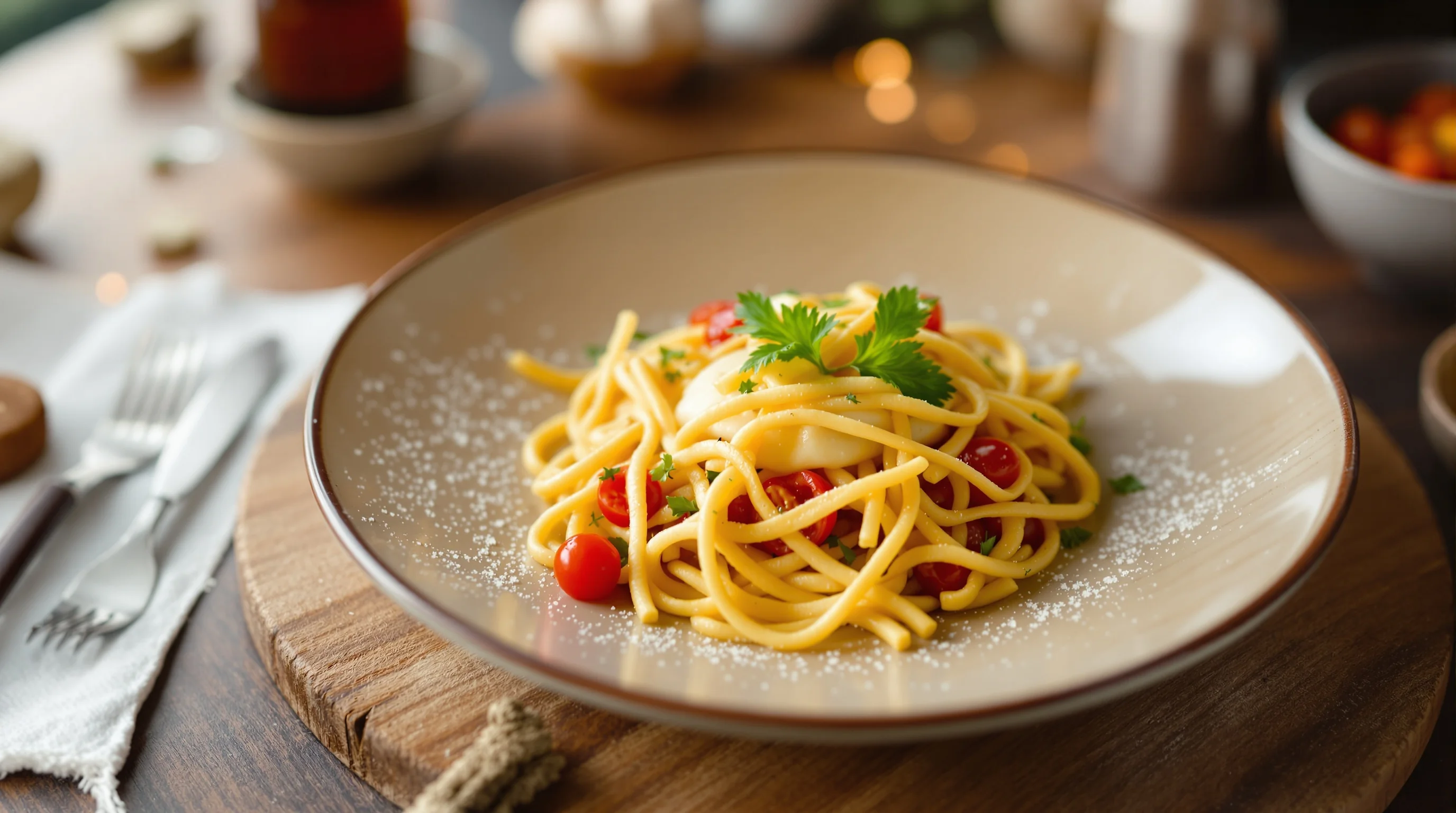
Conclusion
The food photography composition rule of thirds is an essential, low-effort technique that delivers big visual and business benefits. By using a simple 3×3 grid, planning shots with a quick sketch, and leveraging smartphone tools or AI services like YummyPic, Sie can create balanced, compelling images that increase engagement and orders. Remember when to break the rule for creative effect, but otherwise make the grid your default to turn ordinary food photos into persuasive visual storytelling.
